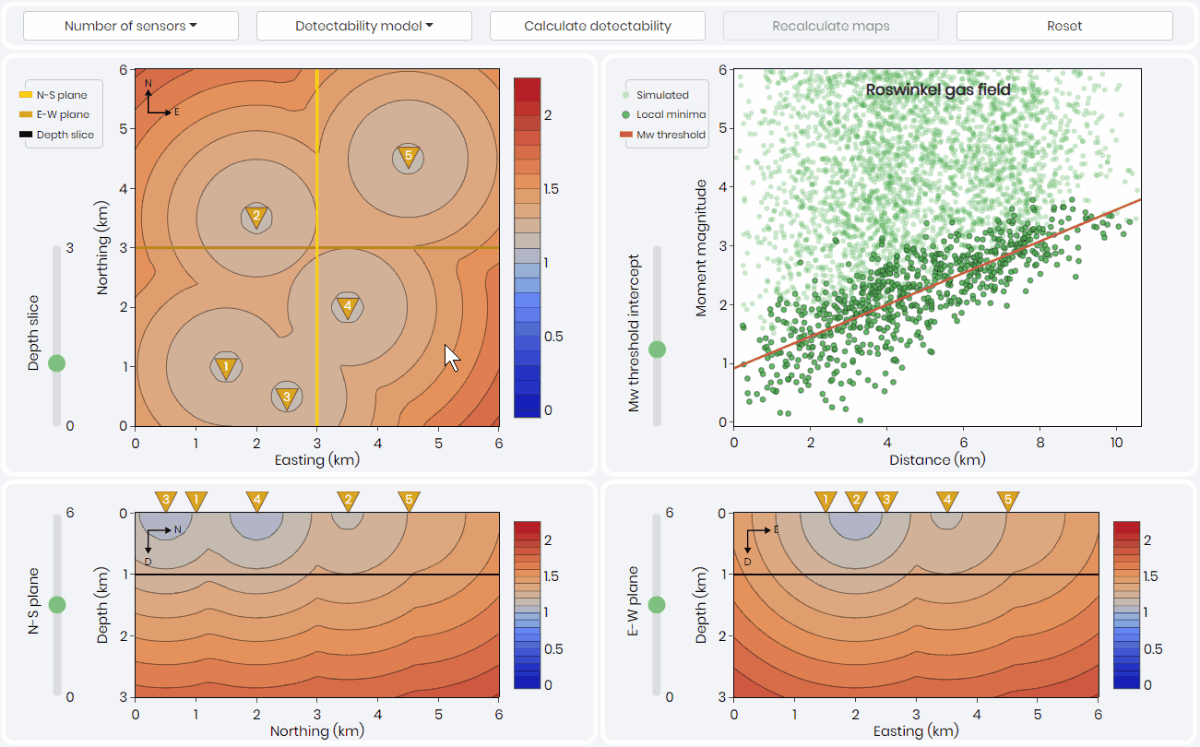How does microseismic (MS) acquisition using DAS (Distributed Acoustic Sensing) compare with conventional Downhole or Surface using geophones? You may have had this question in mind, so here is a brief article to enable you to know the basics regardless of your expertise.
The main difference between “Surface MS Monitoring”, “Downhole MS Monitoring”, and “DAS MS Monitoring” goes back to the sensitivity and the frequency band of the instrumentation used for monitoring.
Conventional Surface vs. Downhole MS Monitoring
First let’s compare the Surface vs. Downhole MS Monitoring using 3C geophones (call it conventional): Although surface MS processing (mainly via stacking and migration) is often quicker than downhole data processing (first break picking), the downhole monitoring geophones (usually 15 Hz) provides a wider range of detectability in the reservoir since they resolve smaller size events. However, the 15 Hz geophones are unable to give accurate magnitude estimates for larger events (> Mw -1) due to saturation. That’s where the surface MS acquisition comes in handy using broadband geophones with main frequency cutoff as low as 0.01 Hz that can pick up very low frequency events (> Mw -1 and above).
Conventional Downhole vs. DAS MS Monitoring
In the case of DAS MS monitoring, since the sensitivity of fiber is lower than downhole geophones the acquired dataset is usually sparse (i.e., fewer events are detected), therefore it provides less information about the dynamic reservoir behavior through advanced analytics. To improve sensitivity, signals from multiple points along the fiber can be stacked but this results in a decrease in MS location accuracy. Using DAS for MS is also restrictive in determining characteristics of the microseismic events. Despite the charm of simpler deployment of Fiber for hydraulic fracturing, more R&D work is needed for this technique to arrive at scientific maturity for MS monitoring.
Combining Monitoring Methods
The downhole monitoring for hydraulic fracturing always wins if you have to choose one method over another (conditional to creating appropriate coverage). If you are combining Surface MS and DAS MS monitoring, you should know that both these techniques will provide you with a dataset that is biased toward larger magnitude events occurring closer to the treatment wells because that’s what the instruments are capable of resolving. Meanwhile, the Surface MS Monitoring is complementary to conventional Downhole since the surface network extends the recording range of seismicity generated during a stimulation. The cost of adding a sparse surface network is generally minimal and is something that should be considered for many plays.

If you are in a decision-making position, budgeting for DAS and MS surveys, you need to take as many details as possible into consideration to arrive at the monitoring solution that works best for your asset. Don’t underestimate the value of feasibility studies (modeling) before you make a monitoring service purchase decision to reduce the unexpected surprises with the acquired MS data.
Ellie Ardakani, CEO @ Meta
Above 👆 you are visualizing such modeling using 5 surface sensors in the metaKinetic platform.
For sure there are more aspects into these techniques that must be considered. Want to have access to this simulation and explore by yourself or have further questions? Contact us!
